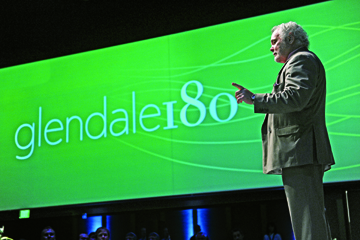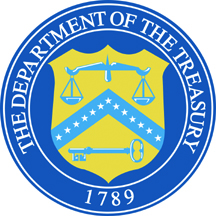
by Mark Smiley | Apr 24, 2015 | Main Articles
Development Along Cherry Creek Comes To Fruition
by Charles C. Bonniwell
 It has been almost a fifth of a century in the imaging and planning but at long last a spectacular entertainment district along Cherry Creek from Colorado Boulevard to South Cherry Street appears to becoming a reality. The city held a press conference at Infinity Park in which the project principals were introduced and the newest vision outlined by Mayor Mike Dunafon and Deputy City Manager Linda Cassaday. Dunafon indicated the project was intended to augment and assist the entire area rather than compete with Cherry Creek and 9th and Colorado Boulevard.
It has been almost a fifth of a century in the imaging and planning but at long last a spectacular entertainment district along Cherry Creek from Colorado Boulevard to South Cherry Street appears to becoming a reality. The city held a press conference at Infinity Park in which the project principals were introduced and the newest vision outlined by Mayor Mike Dunafon and Deputy City Manager Linda Cassaday. Dunafon indicated the project was intended to augment and assist the entire area rather than compete with Cherry Creek and 9th and Colorado Boulevard.
Revised Plans
A little over three years ago Glendale applied for an $80 million tourism subsidy from the state under the Regional Tourism Act for its $360 million Riverwalk project. The application was turned down along with other small county and city projects for the highly controversial $800 million Gaylord Entertainment project in Aurora. That award for the Gaylord project was widely perceived as resulting from a rigged process and continues today to be mired in litigation. After the Regional Tourism Act rejection Glendale had to go back to the drawing board.
The revised project along Cherry Creek has a budget of $175 million of which the city will provide approximately $75 million for roads, creek edge treatments and in particular a parking garage as well as surface and underground parking.
What makes Glendale 180 somewhat unique is the fact that there will be no apartment houses or condominiums involved as a standard method of increasing the rate of return in mixed use projects in Colorado. The mayor pointed out that housing has proved a major impediment in many entertainment projects as residents soon fight to lessen the noise and traffic impacts.
New Name And Parking
 The somewhat quixotic name “Glendale 180” is an oblique reference to the fact that Glendale in the 1970s and 1980s had one of the most vibrant entertainment areas in Colorado. The city fathers in the 1990s slowly destroyed the entertainment area to the enormous benefit of Denver’s LODO area. Thus “Glendale 180” is a type of homage to the phrase “back to the future” made famous by the 1985 movie by that title.
The somewhat quixotic name “Glendale 180” is an oblique reference to the fact that Glendale in the 1970s and 1980s had one of the most vibrant entertainment areas in Colorado. The city fathers in the 1990s slowly destroyed the entertainment area to the enormous benefit of Denver’s LODO area. Thus “Glendale 180” is a type of homage to the phrase “back to the future” made famous by the 1985 movie by that title.
The 22 acre project will have 303,225 total leasable square feet including 109,000 anticipated for entertainment, 151,725 feet for food and beverage and 42,500 for retail. By way of comparison the Cherry Creek Shopping Center has a gross leasable area of 1,032,000 square feet.
A key to the success of Glendale 180 according to city officials will be the existence of ample parking. The city will provide 2,270 public parking spaces including 454 underground, 506 surface parking and a parking structure containing 1,310 spaces. Nearby Cherry Creek North has only 555 public parking spaces all on-street along with private parking.
Spokespersons For Developer And Architect
The developer of the project will be Wulf & Co. a commercial and retail real estate firm centered in Houston, Texas, founded in 1985. Bob Sellingsloth, the president of Wulfe & Co., spoke at the Infinity Park even t praising the city for its forward looking perspective. He noted that at first his firm was unsure of the naming of the project Glendale 180 and so it had a survey done which proved that the name was in fact highly effective.
t praising the city for its forward looking perspective. He noted that at first his firm was unsure of the naming of the project Glendale 180 and so it had a survey done which proved that the name was in fact highly effective.
David Glover on behalf of the project architect, Gensler, spoke eloquently about the desire for the project to bring a vibrant sense of city to the area. He noted that 40 percent of the public surveyed indicated a sense of loneliness in today’s modern society. His design is intended to bring a feeling of light and air as well as “being a place for maximum happiness.”
Glover also indicated that Glendale 180 will be divided into three areas. The area nearest Colorado Boulevard will be known as the “Promenade” while the central area will be entitled the “Meadow” and the area adjacent to South Cherry will have the title the “Mountain.” He noted that if you valet your car you can have it delivered back to you anywhere along the project.
Common Consumption

Patrons will be able to walk from bar to bar with their beverage under the common consumption law.
The city helped pass, at the Colorado legislature, a common consumption area law with Glendale 180 in mind. The law allows patrons to go from bar to bar and long the sidewalks with open containers.
Among the remaining challenges is securing the parcels along East Virginia not owned by the city including the Staybridge Suites Hotel on East Virginia and the property along Colorado Boulevard and east owned by M.A.K. Investment Group, LLC who acquired it in 2006 from the O’Conner family. The city is in negotiations with both property owners and ultimately has the power of eminent domain as the land is part of an urban renewal district.
Suites Hotel on East Virginia and the property along Colorado Boulevard and east owned by M.A.K. Investment Group, LLC who acquired it in 2006 from the O’Conner family. The city is in negotiations with both property owners and ultimately has the power of eminent domain as the land is part of an urban renewal district.
City Officials
 Overseeing the project for the city are Deputy City Managers Chuck Line and Linda Cassaday who were designated as officers for the urban renewal district titled Glen Echo. Line noted that for himself and Cassaday the project will mean long hours in addition to their normal duties, “but it is an incredibly exciting and fun project to work on.” Cassaday stated to the audience that the announcements on new tenants for Glendale 180 will be featured on its website at www.glendale180.com. Leasing on the project is being headed up by the Denver-based firm The Laramie Company and its leasing agent Mary Beth Jenkins.
Overseeing the project for the city are Deputy City Managers Chuck Line and Linda Cassaday who were designated as officers for the urban renewal district titled Glen Echo. Line noted that for himself and Cassaday the project will mean long hours in addition to their normal duties, “but it is an incredibly exciting and fun project to work on.” Cassaday stated to the audience that the announcements on new tenants for Glendale 180 will be featured on its website at www.glendale180.com. Leasing on the project is being headed up by the Denver-based firm The Laramie Company and its leasing agent Mary Beth Jenkins.
Groundbreaking for Glendale 180 is scheduled for the fall of this year with the opening of the project in early 2017.

by Mark Smiley | Mar 27, 2015 | Main Articles
Little Known Treasury Dept. Anti-Money Laundering Scheme
Destroys Some Family Dreams In Cherry Creek Valley
by Charles C. Bonniwell
The housing market in the Cherry Creek Valley is hot and getting hotter. But finding a home one can reasonably afford in today’s market may only be a part of the challenge. Pursuant to a little kno wn 2012 edict the United States Treasury Department quietly imposed a massive far-reaching program purportedly to address money laundering concerns. It has in fact destroyed some innocent families’ best laid plans and created a paperwork nightmare for many people trying to buy a home or refinance one.
wn 2012 edict the United States Treasury Department quietly imposed a massive far-reaching program purportedly to address money laundering concerns. It has in fact destroyed some innocent families’ best laid plans and created a paperwork nightmare for many people trying to buy a home or refinance one.
Joe Metzler a mortgage specialist who heads Mortgages Unlimited in St. Paul, Minnesota, declared: “Even if you are the most perfect [borrower] expect that you might still get singed going through.”
Public Misconception And Misery
Many potential borrowers mistakenly believe their documentation quagmire is due simply to lenders tightening loan guidelines after the mortgage implosion in 2008 resulting from loose loan standards. The tightening of actual loan standards would have been relatively simple. Instead much of the paperwork debacle is caused by a federal agency (the Treasury Department) which has a totally different agenda i.e. preventing the laundering of money that has not been subject to being fully and completely taxed. The Treasury Department has no reason to disabuse the public of its misconception and the Treasury Department’s hidden role in their misery.
Justin Petrochko, events manager for non-profit Project Angel Heart, noted that the massive paperwork demands of the Treasury Department almost prevented him and his wife Marissa from acquiring a home. Petrochko stated, “If it were not for Marissa working from home for a couple of days a week for several weeks the home buying process would not have happened for us. I don’t know how many families satisfy the demands and of course many end up not being able to buy a home.”
a home. Petrochko stated, “If it were not for Marissa working from home for a couple of days a week for several weeks the home buying process would not have happened for us. I don’t know how many families satisfy the demands and of course many end up not being able to buy a home.”
The executive editor of the Chro nicle Mark Smiley had applied for a refinance of his home in Mayfair. “I thought it would be a simple process. We easily qualified for the loan and had more than sufficient equity in the house. Was I ever wrong. It was absolute torture. No matter what documents we provided there were ever increasing and endless and sometimes duplicative demands for items that had nothing to do with the underlying transaction but apparently for fear of rules and regulations from Washington.”
nicle Mark Smiley had applied for a refinance of his home in Mayfair. “I thought it would be a simple process. We easily qualified for the loan and had more than sufficient equity in the house. Was I ever wrong. It was absolute torture. No matter what documents we provided there were ever increasing and endless and sometimes duplicative demands for items that had nothing to do with the underlying transaction but apparently for fear of rules and regulations from Washington.”
Smiley grimaced, “My parents gave us a $100 check to buy their granddaughter a birthday gift. It was required that I provide a letter from my parents declaring the reason and purpose of the gift. My parents were traveling so I had to reach and have them overnight the letter. We had scores and scores of demands that had absolutely nothing to do with our ability to repay the loan.”
Smiley, in fact, eventually gave up. “I called my lender and said ‘I’m done. I am not going to provide one more lousy additional document.’ I politely told the lender you can take your loan and shove it.” Fear of losing a valued and qualified customer resulted in higher ups at the bank waiving some of the more ridiculous paperwork requirements and Smiley did eventually close the loan, but the affair did not leave him happy. “As far as I am concerned the U.S. Treasury Department should be officially designated a ‘terrorist group’ for what they are doing to everyday families across America.”
Concerns Over Treasury Department
Homebuyers are not the only ones upset with the Treasury’s ever more intrusive anti-money laundering activities. The publication American Banker reported late last year in an article titled “Treasury, FinCEN Try to Quell Fears over Money-Laundering Enforcement” reported that “banks were cutting ties with entire business sectors such as check cashers and money transmitters, because of a blunt governmental approach to stamping out money laundering.”
The ever growing and more intrusive federal anti-money-laundering project began simply enough in 1970 with “The Currency and Foreign Transactions Reporting Act” (better known as the “Bank Secrecy Act”) which required banks to report cash transactions exceeding $10,000. The program went on steroids with the provisions of Title III to the USA PATRIOT Act of 2001 in response to the events of September 11, 2001, and the attack on the World Trade Center Twin Towers.
In 2012 the Treasury Department through its Financial Crimes Enforcement Network (“FinCen”) issued a rule that required even non-bank residential mortgage lenders and originators to establish anti-money laundering (AML) programs and report so called suspicious activity reports (SARs). That required at a minimum (1) the development of internal policies, procedures and controls, (2) the designation of a compliance officer, (3) an ongoing employee training program and, (4) an independent audit function to test programs.
Failure to comply with a FinCEN rule subjects a person to possible violation of the USA PATRIOT Act with the imposition of major fines ($25,000) and imprisonment of up to five years. Experts estimate that all of the Treasury’s anti-laundering requirements including the more recent mortgage rules result in a drain of hundreds of millions from the United States economy in compliance and enforcement with little or no actual benefit as criminal money launderers simply shift their activities to other areas. FinCEN has also made an effort to go after even the smallest of businesses. It recently announced with great fanfare regarding Colorado, a $75,000 civil money penalty against a tiny cash checking company, Aurora Summit, Inc., for not complying with its mandates.
Fannie Mae Requirement
Many of the requirements that drive potential buyers crazy are issued by Fannie Mae (the Federal National Mortgage Association) which is the largest investor of mortgages in the country. Fannie Mae decides what documentation it requires for a mortgage to be considered qualified for purchase.
For example Fannie Mae requires that all funds used for down payment, closing costs and financial reserves come from acceptable and verified sources as a way to comply with the anti-money laundering of the Treasury Department. As a practical matter it means that all so-called “large deposits” are verified as coming from acceptable sources. Large deposits are in turn defined so that they include transactions no ordinary person would define as “large.” Under Fannie Mae’s rules any deposit in excess of 50 percent of a borrowers “qualified income” is declared to be “large.” Thus if a borrower has qualified income of $3,500 per month, any deposit of $1,650 is potentially a large deposit and the mortgage company will demand the source of all of those funds down to the least significant check.
While the provisions in Fannie Mae’s Section B3-4.2, Verification of Depository Assets, would provide certain leeway in issuing verification demands, that is not what happens in the field. A company’s local compliance officer is often a low paid staff member who greatly fears a governmental audit which could destroy his or her life. They in turn err at their company’s urging on the side of caution and make ever greater demands. In the case of the Chronicle’s Mark Smiley, consulted experts could not pinpoint any specific rule or regulation that would cause that a single $100 check deposit from a parent to generate a demand for verification other than the general fear generated by the Treasury Department and FinCEN.
Treasury View Of Public
A small mortgage lender who asked for anonymity for fear of attracting undue federal attention stated, “The federal anti-money laundering scam has become a bureaucratic beast that is ripping apart the fabric of the home mortgage business as well as other whole sections of the banking industry. It was Republicans that gave us the Bank Secrecy Act and the USA PATRIOT Act and it is a Democratic administration that has come up with these most recent inane requirements under an out of control Treasury Department. As far as the Treasury Department is concerned the members of the American public are sheep to be sheared and they simply don’t care how bloody the shearing is.”

 It has been almost a fifth of a century in the imaging and planning but at long last a spectacular entertainment district along Cherry Creek from Colorado Boulevard to South Cherry Street appears to becoming a reality. The city held a press conference at Infinity Park in which the project principals were introduced and the newest vision outlined by Mayor Mike Dunafon and Deputy City Manager Linda Cassaday. Dunafon indicated the project was intended to augment and assist the entire area rather than compete with Cherry Creek and 9th and Colorado Boulevard.
It has been almost a fifth of a century in the imaging and planning but at long last a spectacular entertainment district along Cherry Creek from Colorado Boulevard to South Cherry Street appears to becoming a reality. The city held a press conference at Infinity Park in which the project principals were introduced and the newest vision outlined by Mayor Mike Dunafon and Deputy City Manager Linda Cassaday. Dunafon indicated the project was intended to augment and assist the entire area rather than compete with Cherry Creek and 9th and Colorado Boulevard. The somewhat quixotic name “Glendale 180” is an oblique reference to the fact that Glendale in the 1970s and 1980s had one of the most vibrant entertainment areas in Colorado. The city fathers in the 1990s slowly destroyed the entertainment area to the enormous benefit of Denver’s LODO area. Thus “Glendale 180” is a type of homage to the phrase “back to the future” made famous by the 1985 movie by that title.
The somewhat quixotic name “Glendale 180” is an oblique reference to the fact that Glendale in the 1970s and 1980s had one of the most vibrant entertainment areas in Colorado. The city fathers in the 1990s slowly destroyed the entertainment area to the enormous benefit of Denver’s LODO area. Thus “Glendale 180” is a type of homage to the phrase “back to the future” made famous by the 1985 movie by that title. t praising the city for its forward looking perspective. He noted that at first his firm was unsure of the naming of the project Glendale 180 and so it had a survey done which proved that the name was in fact highly effective.
t praising the city for its forward looking perspective. He noted that at first his firm was unsure of the naming of the project Glendale 180 and so it had a survey done which proved that the name was in fact highly effective. Suites Hotel on East Virginia and the property along Colorado Boulevard and east owned by M.A.K. Investment Group, LLC who acquired it in 2006 from the O’Conner family. The city is in negotiations with both property owners and ultimately has the power of eminent domain as the land is part of an urban renewal district.
Suites Hotel on East Virginia and the property along Colorado Boulevard and east owned by M.A.K. Investment Group, LLC who acquired it in 2006 from the O’Conner family. The city is in negotiations with both property owners and ultimately has the power of eminent domain as the land is part of an urban renewal district. Overseeing the project for the city are Deputy City Managers Chuck Line and Linda Cassaday who were designated as officers for the urban renewal district titled Glen Echo. Line noted that for himself and Cassaday the project will mean long hours in addition to their normal duties, “but it is an incredibly exciting and fun project to work on.” Cassaday stated to the audience that the announcements on new tenants for Glendale 180 will be featured on its website at www.glendale180.com. Leasing on the project is being headed up by the Denver-based firm The Laramie Company and its leasing agent Mary Beth Jenkins.
Overseeing the project for the city are Deputy City Managers Chuck Line and Linda Cassaday who were designated as officers for the urban renewal district titled Glen Echo. Line noted that for himself and Cassaday the project will mean long hours in addition to their normal duties, “but it is an incredibly exciting and fun project to work on.” Cassaday stated to the audience that the announcements on new tenants for Glendale 180 will be featured on its website at www.glendale180.com. Leasing on the project is being headed up by the Denver-based firm The Laramie Company and its leasing agent Mary Beth Jenkins.








